The Battle of Midway Roundtable Opening Remarks
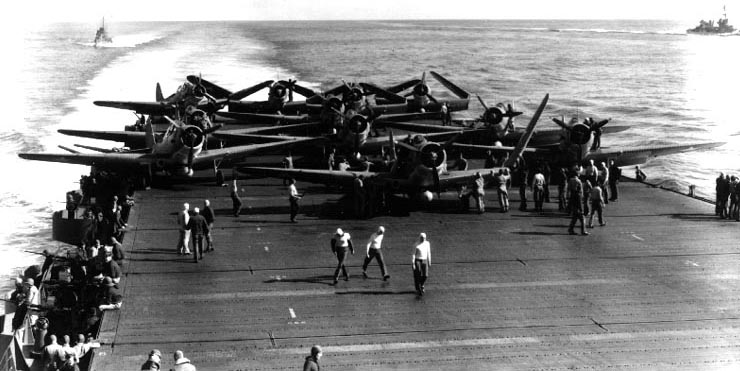
Welcome to the April issue of the Battle of Midway RoundTable. First off there are many Midway celebrations scheduled each year and this year is no exception. I have received a few requests for information but not as many as in years past. Last year was the 80th and this year being the 81st probably doesn't hold quite as much interest. However if any members know of an event send me an email and I'll list them in the next newsletter. If we have a few I'll put out the next newsletter before the Memorial Day weekend even if it is an abbreviated version.
This month we have a quite interesting article on the B-26/TBF attack in the morning of the 4th. We also have some more information on the Mark 13 mod 0/mod 1 torpedo as well as one of our veterans made a special trip to visit some students.
Hope everyone is ready for the Midway celebrations next month. There were some very interesting video casts last year from a few of our members and I hope there are more this year. I always learn a little something from each one. I any of you are scheduled to speak and we can tune in by all means let us know. I for one will tune in.
100-Year-Old Veteran Travels To Meet Students In Crescent Oklahoma
2023 April 16 From Ed Fox USMC/ARMY Ret almost
Life Member
Marine Corps League 993
American Legion 639
VFW 3404
Midway - Iwo - Korea
Ed Fox received a veterans day letter from a student in Cresent Oklahoma. So he made the trip and surprised the students. Read the story and watch the video in the link below.
Click here to read the article and watch the video.
Mk0 vs Mk1 torpedo
2023 17 April From Chuck Wohlrab
Reading this month's issue was quite interesting. The Mk 13 torpedo has been an interest of mine for a number of years. The possibility of the last of the Mk 13 Mod 0 torpedoes being issued to Ranger is an interesting possibility, but I wonder if they might actually have been Mod 1s, because of the date issued. My first reaction was that since the Mod 1s were already in the hands of other carriers (most notably Enterprise, since they were used in the July 1941 torpedo tests in Hawaii) I would think Ranger would have gotten Mod 1s as they were new production at the time.
One issue with Ranger, and Wasp, was that their designs were influenced by Treaty limitations, and one way to reduce weight was to not include the torpedo workshops and magazines. That also led to their unusual Air Group organizations, with two fighter and two scouting squadrons, instead of the normal (for full sized carrier) organization of one each fighter, scouting, bombing and torpedo squadrons. That, thankfully, made it easier for Yorktown to go to the Pacific with a squadron of F4F-3 Wildcats.
One other thing, in Mr. Longton's note that included the photo of the torpedo photographed by M/V Petrel, it is definitely NOT a Mk 13. The length is consistent with a Mk 15 (as would have been carried by USS Phelps). I took a minute to cut an image from the Mk 13 manual (from the link provided in the latest newsletter):
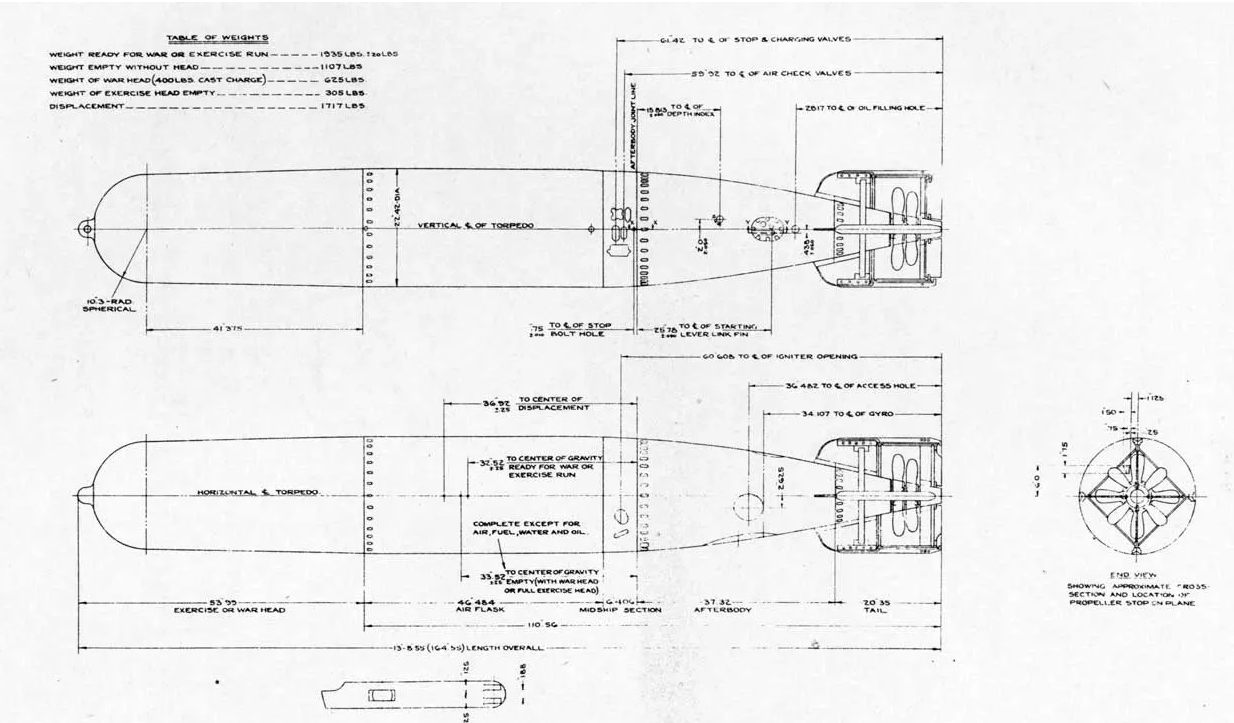
As you can see, the Mk 13 is much shorter than the Mk 15, and the torpedo in the Petrel photo. When comparing the diagram to the photo it's clear that it's not a Mk 13.
Lastly, IIRC there was a Cheif Petty Officer on Midway that come up with the idea of using CO2 to purge the gas lines to prevent fires. during or right after the Battle of Coral Sea. I don't think I've read anything indicating this was passed to the other carriers in time for Midway.
V/r,
Chuck Wohlrab
Comments relating to items brought up in the latest issue of the Rountable:
17 April 2023 From John Lundstrom
I have some comments relating to items brought up in the latest issue of the Rountable:
Regarding Herman Wouk's " War and Remembrance." I had the honor to read and comment on the Midway chapters in March 1977 while on a research trip to Washington, DC. Wouk was friends with Capt. Roger Pineau who was Director of the Navy Memorial Museum, and Pineau helped his research. Pineau was of course S.E. Morison's research assistant as well as an expert on the IJN. He was also very kind to me personally and in 1973 provided an introduction for Capt. Edwin T. Layton. Layton in turn was extremely helpful with my M.A. thesis that was later expanded and published in 1976 as " The First South Pacific Campaign."
Midway research by the mid 1970s greatly benefited from Walter Lord's " Incredible Victory" and for the Enterprise, Tom Buell's wonderful " Quiet Warrior" bio of Spruance. Pineau may have provided Wouk the addresses of some Enterprise veterans. He did ask Wouk's permission to let me read the Midway chapters. I can't say I offered Wouk anything of particular substance on Midway. He wrote me a very nice thank-you letter. When " War and Remembrance" was published in 1978, he sent me a signed presentation copy of the special edition prepared for the "Friends of the Author."
I do find amusing the reference in the Roundtable to the "serious defects" in the "literature of the time." Maybe one should think more about just how history comes to be written. I wonder how someone in 2123 pawing through the books of this time will bemoan the "serious defects" in them.
Regarding the CO2 fire prevention system invented on the Yorktown, I did write about in an endnote in " Black Shoe Carrier Admiral," p. 570, which I quote here:
"After witnessing the inferno on the Lexington, Machinist Oscar W. Myers devised an "ingenious CO2 purging system" for the fuel lines above the gasoline stowage tanks and arranged to fill the voids around the stowage tanks with carbon dioxide. It was a tremendous achievement that other carriers adopted but unfortunately not in time to save the Wasp. CO USS Yorktown to Chief, BuAer, Comments on Air Department Material and Equipment (18 June 1942) and citation in CO USS Yorktown to Cincpac, Recommendations for Awards (18 June 1942), copies in Smith Papers."
The "Smith Papers" are those of VAdm William Ward Smith, USN (Ret.).
I have no reason to believe that Myers's idea was ever passed on to the Enterprise and Hornet prior to Midway.
Best wishes,
John Lundstrom
Attack of the B-26's and TBF's
24 April 2023 From Patrick Hill
I’ve been researching the role of B-26 squadron for the better part of a year now. The traditional story of their role. I would like to introduce the topic in a brief outline in the hope it would generate enough interest to be able present the entire evidence.
-----------------------------------------------------------------
In his excellent book, “ Incredible Victory” Walter Lord opines “Probably no one is less informed than an Army flier on a Navy base.” True enough, unless you are researching an Army flier on a Navy base from 80 years distant. One would think that after 80 years and the products of many talented historians to our benefit, that we would have resolved all the mysteries worth knowing about the Battle of Midway. But it is almost a truism that history is never really settled. It is always subject to new discoveries and interpretations that can enhance our understanding. I think I may have come across one that has been hiding in plain sight for most of the past 80 years.
The first PBY sighting came in at 0533 from Lt. Howard Ady (a founder of this BOM Roundtable) followed 10 minutes later by Lt William Chase with the warning “many planes heading Midway” and then, the persistent Ady again, at 0553 with “two carriers 320 degrees 180 miles (from Midway)”. Overhearing these reports, other PBY’s began to converge on Ady and Chase’s patrol sectors to lend support. Our mystery opens here because while Ady had the bearing correct, his estimate of their distance from Midway was actually 40 nautical miles short. Aboard American carriers calculated points of interception were being based on the mistaken location of the IJN.
The miscalculation was originally recognized in a publication, “ The Battle of Midway Including the Aleutian Phase, June 3 to June 14, 1942: Strategical and Tactical Analysis” produced by Richard W. Bates in 1948 of the Naval War College for use by the Bureau of Naval Personnel. The 335 page report was initially classified because of the significant detail it contained, and remained unpublished until 2017 but was occasionally made available to selected researchers like Samuel E.Morison, Walter Lord and Gordon Prange as a rich resource for their notable histories of the battle. However, they failed to highlight the significance of the error. In his informative book “ Midway Inquest” published in 2007, the late Dallas Isom emphasized for the first time in print the far rippling consequences of this miscalculation across both the USN and IJN fleets.
The sacrificial efforts of the planes based on Midway were much more important than is often appreciated. Nimitz understood the outmatched equipment and flyers there were not of sufficient strength to deal the Kido Butai a deadly blow. But their dedication might just disrupt and delay the enemy long enough to permit the American first team on board our carriers to arrive and deliver the killing strike.
Examined more carefully the Bates Report reveals the fallacy of the long accepted narrative that the first two squadrons scrambled from Midway by the PBY reports - the B-26s and the TBFs - arrived over Kido Butai and attacked virtuously simultaneously. The only Americans present during the attack never made such claims. So what is their origin?
Probably the earliest was produced by the USN Office of Naval Intelligence Battle Narratives in January 8, 1943. The claim therein says that “...The six Navy TBF planes, commanded by Lt. Fieberling, made a gallant attack at the same time as the B-26's.” And that is pretty much how the story has stood ever since.
However, in the preface to this work, under his own signature, Adm. E.J. King, Commander in Chief, U.S. Fleet and Chief of Naval Operations, states:
“It should be remembered also that the observations of men in battle are sometimes at variance. As a result, the reports of commanding officers may differ although they participated in the same action and shared a common purpose. In general, Combat Narratives represent a reasoned interpretation of these discrepancies.” Indeed.
(Find it on the BOMRT website under the References Tab “Links to Midway Related Websites”)
The flight specifications of the TBF and B-26 are dramatically different. Both planes departing at the same time, on the same heading unimpaired, but at significantly different speeds would not arrive “simultaneously.” The faster, twin engine B-26s arrived over Kido Butai alone, and attacked first fully 10 minutes before the TBFs.
The only surviving pilot of the TBFs Ens. Bert Earnest did not say the TBFs attacked first or with others. In fact, he could not report what happened to any other plane in his squadron. Capt. James Collins leading the B-26s did not say it either. Not in his debriefing with Marine Col. Ira Kimes on his return, nor in his written after action report submitted to the Army on his return to Hickam Field June 5 , although he noted “somebody altered” his report when he read it later. He still had his original copy in 1992. And, in a recorded interview for the Marauder Historical Society in 1992, he further denied seeing “any other American planes” during the mission. See his full 2 hour interview on a YouTube site maintained by Joshua Muri, the grandson of the other surviving B-26 pilot, Lt. Jim Muri. see both of their interviews here: https://www.youtube.com/channel/UCLQYDlI2440eKKxXnP0vG0Q
I understand that this event is a "side show to the big show", but sixty percent of all the US Army casualties suffered in the Battle of Midway fell in the two B-26 bombers that were lost in this attack. None had ever been given the chance to even practice dropping a torpedo. But they didn’t question their mission. They just accepted their duty. The Army never tried it again during all of WWII. The BOMRT exists to get the story right as much as we are able. We now owe them a truthful accounting for their sacrifice.
Regards,
Patrick Hill
Saint Paul, MN
Editors Note: Interesting topic. I always thought the B-26's went in first. Certainly before the TBF's. If I recall that was stated pretty clear in The Ragged Rugged Warriors, one of the first books I read growing up. From your note what you're contending is that the B-26's attacked alone but most histories say they attacked with the TBF's?
25 April 2023 From Patrick Hill
Thanks for the prompt reply. Never heard of the book The Ragged Rugged Warriors but I'll look for it.
Yes. The B-26 was a significantly faster plane so departing together with the TBF as they did they would have outdistanced them long enough to conduct their attack and be gone before the TBF got there. The simultaneous attack idea started with the source I cited along with Lord, Cressman, Prange, and Shattered Sword who without any eyewitness, first hand after action reports to reference but for the one from Collins, which he said was altered to show the TBF attacked at the same time, some even saying they cut in front of Collins to attack first. It's such a small part of the bigger story that most later writers just echoed the mistake to save time. And as you know once a mistake is in print it often gets referenced and then repeated again. The reports coming out of the NAS favored the TBF because they were Navy planes and with no evidence at hand to contradict it, there was probably a tiny bit of desire to place them ahead of the Army for the first strike. The surviving B-26 planes
were so badly damaged they never flew again and with no reason to stay, their crews were ferried back to Hickam on a B-17 the next day and therefore out of reach for further review after the battle when the NAS reports were written. But the taped interviews with Collins I referenced make his position quite clear. With the bulk of the USAAF fatalities from the battle on those B-26s they deserve a full accounting.
I've got some additional info on whether the Lt. Herb Mayes' B-26 was the actual one that buzzed the AKAGI island but that's for another day.
25 April 2023 From Patrick Hill
Your referral peaked my interest, so in checking the St. Paul library I was surprised to find they had a single copy. Being a retired guy with too much time on my hands, I travelled to the main branch downtown and pulled it off the shelf in the very back stacks. It's in good shape but when it lands in those stacks it usually means it hasn't been checked out for 50 years. Not anymore. You should have seen the look on the librarian's face when I brought it out of the back.
Anyway, your recollection is completely accurate but for one item. The "Other Midway" chapter was drawn from written records mostly of Muri's plane of the 22nd Bomb group which is where the survivors were sent after Midway.They had actually been on their way to Australia/New Guinea when they stopped at Pearl Harbor for gas and fell under Nimitz' gaze. He was at that moment trying to beef up Midway and sent them out there instead. The author makes no mention of interviewing any Navy personnel including pilot Bert Earnest who was still around. Collins gives a very entertaining and informative account of their experiences in that taped interview for the Marauder Historical Society I sent you. He also disparaged his B-17 Army pals like Sweeny for flying too high to do any good. Unlike them Collins freely admits the Navy won the battle. He doesn't even think any of the B-26 torpedoes exploded.
Your recollection of the chapter in the book are accurate but for this. While the chapter concentrates on the events involving the B-26, he too implies they attacked in unison with the TBF. "Hundreds of big and medium (IJN) guns were depressed and aimed at the approaching Marauders and Avengers." and "The three remaining Marauders pressed on, the crews unaware that at almost at the same instant that the (4th) Marauder exploded, the fifth Avenger also was cut down." This is the extent of suggested joint actions and they have no supporting testimony. Keep in mind the Japanese timing and accounts were not available until years after the war ended. All of the fighting described involved only events on Muri's plane, none of Collins testimony. Nor does he mention the Avengers and Marauders depart Midway at virtually the same time with the Avengers climbing to 4000 ft and cruising to target at 160 knots while the Marauders remained below 800 ft and cruised to target at 200 knots. Possibly he
saw with those differences they could not arrive together an hour later.
I've got a link to a history of the 22nd bomb group produced in Australia during the war with direct accounts from members of the unit of their actions including some Midway stuff that might interest you. I'll forward it later.
Thanks for referring me to the book. Back to the stacks for another 50 years. Talk to you later.
Pat
Editors Note: Here is a link to the pdf of the book on the B-26:
22nd BOMBARDMENT GROUP
Enterprise Video
28 April 2023 Dave
Kent Walters recommended I forward you this video that I came across on YouTube. It was original footage taken from the Enterprise, not sure of the exact date, however it is quite interesting not just from the air operations being conducted but also the small details that can be gleaned from careful study. At about 38:13:18 on the film counter you see an SBD which I believe is Scouting 5 (Editors Note: Probably Scouting 6) and from this video angle you can see that the rear .30 cal gun doors that appear in later versions of the plane which also have two sliding plates that move rearward are not visible on this aircraft, but instead they seem to show a much more unknown and interim solution of simply cutting this area out to allow the ammunition feed inlets now wider from the 2 guns, to pass and allow the guns to be stowed. Kent Walters discovered this when he modeled B15 piloted by George Goldsmith. His photo evidence was obvious but no other information like this was apparent.
As far as any of us know this small detail is widely unknown and often not recognized at all. This footage clearly shows this at a much better angle than what we see in the B15 photo and should nonetheless help substantiate this practice. It may seem mundane but to us scale modelers these are the things we are good at noticing…Hope this helps add to your database.
Best, Dave
Here is the link:
https://youtu.be/7msdpXoGOqs
Jack Holder BOM PBY crewman
March 5 2023 From Robert Rheinboldt
This is not a question but an orbit from the March 5, 2023 edition of the Houston Chronicle. I did not know this person but the orbit stated he flew at Midway so I thought you might have interest.
Regards
Robert Rheinboldt
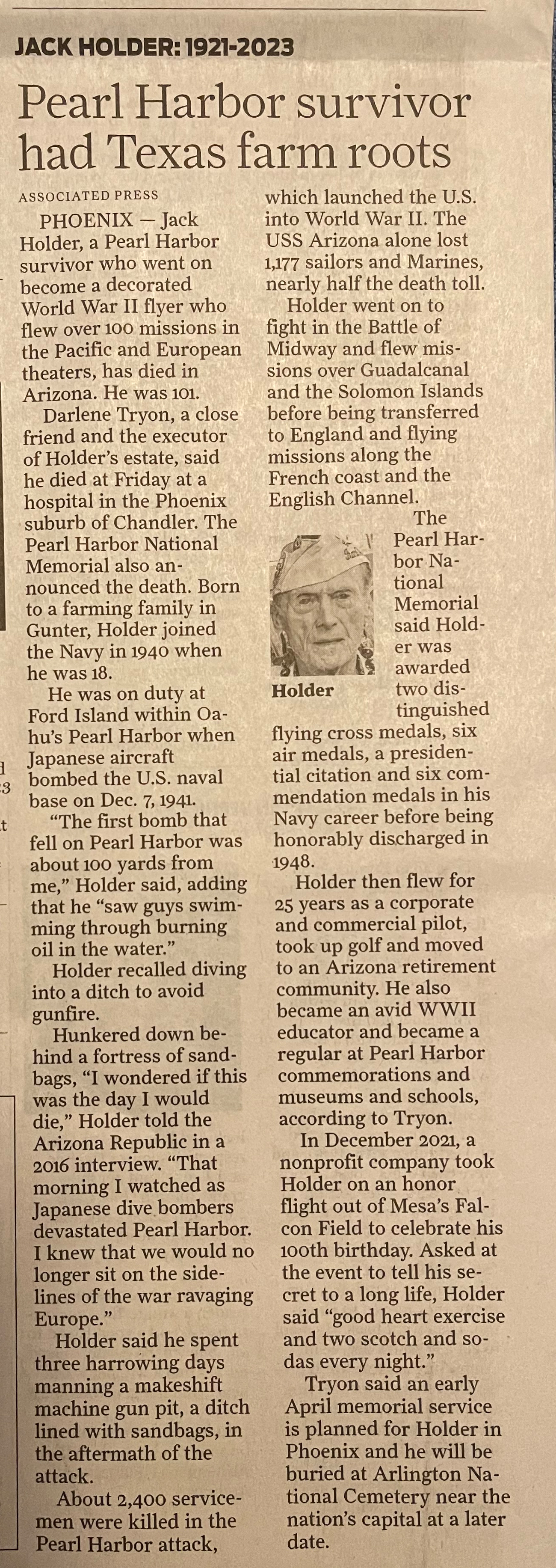
May 9 2023 From Barrett Tillman
According to Airbase Arizona, the local CAF wing, Holder died Feb 24 at 101. Pearl Harbor survivor and on the P-boat that followed up Howard Ady's report. Later he was a turret gunner in PB4Ys both Pac and Lant.
Editors Note: Thanks. I had a notification when he passed and the obit had him at Midway but could not find him on any list of Midway Veterans.
Pearl Harbor Survivor Jack Holder Tells His Story
Editors Note: The following was included in an email from the Pearl Harbor Aviation Museum.
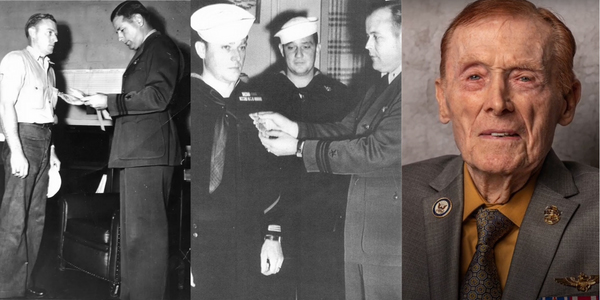
As a young man, Jack grew up in rural Texas during the great depression. Like so many others he sought a better life and the excitement of seeing the world in April 1940. He enlisted in the Navy upon graduation from high school with a dream to be an aviator. After basic training in San Diego, Jack completed an additional four months of training as an aviation machinist’s mate and was deployed aboard the USS Platte and arrived in Pearl Harbor in December 1940.
“When I got the orders to transfer to Hawaii, I was delighted,” Holder said. “Upon arrival in Pearl Harbor, I went straight to the VP-23 PBY squadron based on Ford Island.”
"The PBY wasn’t a high-performance aircraft like the famous P-51 Mustang, but boy was it versatile. PBYs were used for search and rescue, for convoy escort duties, for anti-submarine patrols, as bombers, and, in a pinch, for cargo transport. My first four months in the Navy, I was part of the beach crew. And following that, I was assigned to an aircraft crew as a first mechanic and a waist gunner. Four months after that, I became flight engineer.”
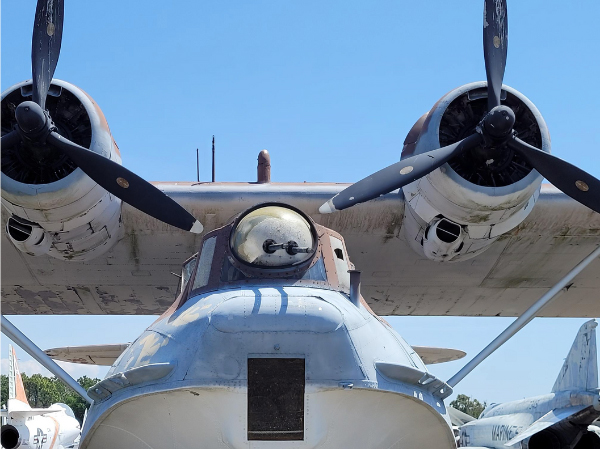
“At 7:55 AM on December 7th, my section had just fallen in for muster in our hangar. As our section leader began calling roll, we heard a screaming aircraft, then, a terrible explosion. We ran outside. The neighboring VP-21 hangar just a hundred yards away had been hit by the first bomb dropped on Ford Island. Squadron VP-21’s hangar was severely damaged.
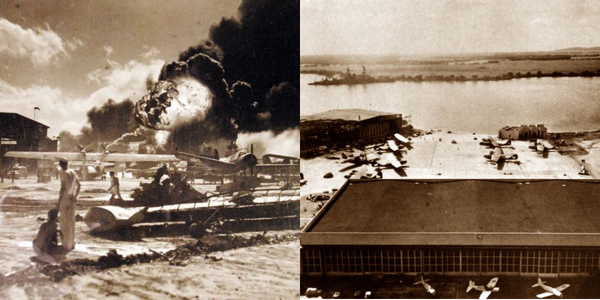
“Luckily, the hangar was empty; the squadron's PBYs were in the Philippines on advanced base training. My hangar was riddled by machine gun fire. Overhead, we saw several planes with the rising-sun insignia. We immediately realized what was happening. Someone in our section knew that there was a sewer line being constructed behind the hangar. He yelled, ‘Let’s go to the ditch.’ About 20 of us followed him and jumped in the ditch.
“As we ran, I looked up and saw a Japanese plane circle and head straight for us. The pilot saw us and as he approached, I helplessly clung to the side of the ditch, sure this was the end for us all. I could see the expression on his (the pilot’s) face–l froze. The war had started and I just knew I was going to die. I’m an old man now, and it is harder for me to remember things…but as long as I live, I’ll never forget that moment: the face of the pilot, the roar of the plane’s engine, and sight of its guns aimed right at me...."
“l remember my hands clenching my shipmate’s shoulders—God, don’t let me die in this ditch."
“Our fear was intense but our determination was unrelenting...First the fear, then the adrenaline, and then you act. When I left the ditch, I saw the devastation of the PBY hangars...and all our aircraft engulfed in smoke and flames; l knew I was in the middle of the beginning of something that would change the world and my life. The flames and wreckage surrounded and suffocated me with grief, but I had little time to review the damage. What was really the horror was seeing my shipmates jumping off the ships into the water that was covered in oil and on fire.”
Following Pearl Harbor, Jack Holder continued to fly as a flight engineer on a PBY-5 with Patrol Squadron 23 (VP-23). A few months later, he soon found himself on the front line again as intercepted radio traffic indicated an imminent Japanese attack at Midway.
|